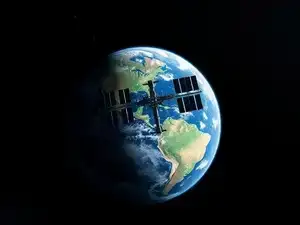Core Force Expands 'Space Bermuda Triangle,' Alarms NASA

NASA and other satellite organizations have been closely monitoring a growing disturbance in Earth's magnetic field known as the South Atlantic Anomaly (SAA). This phenomenon, which affects a broad region spanning South America and the South Atlantic Ocean, has grown in recent years.
The Earth's magnetic field is substantially weaker in the South Atlantic region, allowing high-energy particles to approach the planet's surface. This disturbance is hurting satellites and space operations, perplexing experts worldwide.
The South Atlantic Anomaly refers to a specific area known as the "Bermuda triangle of space," in which the Earth's magnetic field is much weaker than elsewhere.
The magnetic field acts as an unseen shield, protecting the planet from dangerous solar radiation and charged particles from space.
In the SAA region, the shield thins, allowing high-energy particles to approach the Earth's surface far closer than usual. This does not directly affect people on the ground, but it poses significant obstacles to spacecraft, satellites, and astronauts passing through the area.
Why is this abnormality forming?
The reason for the anomaly is located deep beneath the Earth's surface. Scientists believe it is due to complicated activity in the planet's outer core. This core is composed of molten iron and nickel, and when these components flow, they form the Earth's magnetic field, a process known as geodynamo.
However, this system is not fully balanced. The magnetic axis (the imaginary line linking the Earth's magnetic north and south) is tilted about the planet's spin axis, which contributes to the SAA. This natural tilt weakens the field in specific areas.
Another significant influence is the African Large Low Shear Velocity Province, a massive, unexplained structure lying approximately 2,900 kilometres (1,800 miles) beneath the African continent.
This massive mass of rock disrupts the flow of molten materials in the core and is thought to be a primary cause of the South Atlantic region's weak magnetic field.
How will it affect satellites and technology?
One of the most pressing concerns about the SAA is how it would impact satellites and space sensors. When satellites pass through this reduced magnetic field, they are exposed to more cosmic radiation than usual.
This can result in single-event upsets (SEUs), which are brief faults in electronic systems induced by a high-energy particle. In more catastrophic circumstances, entire systems may shut down or sustain irreparable damage.
Many space agencies have configured their satellites to turn off or enter safe mode when travelling through the SAA to reduce danger. Even the International Space Station (ISS), which orbits on the border of the anomaly, must take extra measures when flying through the area, as it is now under serious threat.
According to NASA, the anomaly is one of the most common causes of satellite breakdowns in low-Earth orbit.
Is the abnormality changing?
What bothers scientists even more is that the abnormality is unstable. It has been progressively drifting west and modestly expanding. In recent years, researchers discovered that it is separating into two distinct zones, each with its centre of lowest magnetic strength.
This development has made it more difficult to anticipate and control the dangers associated with satellite navigation through the area.
NASA and other space organizations are keenly watching the issue. Tools such as the European Space Agency's Swarm satellites are being used to monitor changes in the Earth's magnetic field and predict what may occur in the future.
While experts do not believe the anomaly indicates a complete magnetic pole reversal, which has happened in the past, they do accept that the magnetic field is diminishing at a slow but perceptible rate.
What does this signify for the Earth?
The atmosphere provides extra radiation protection; thus, there is no immediate danger to individuals on the ground. However, the South Atlantic Anomaly shows that the Earth's magnetic field is dynamic and not entirely understood.
It presents an increasing challenge to space technology while also reminding us of the enormous forces at work beneath our feet. According to NASA, monitoring this anomaly is critical not only for science but also for the safety of everything we send into space.